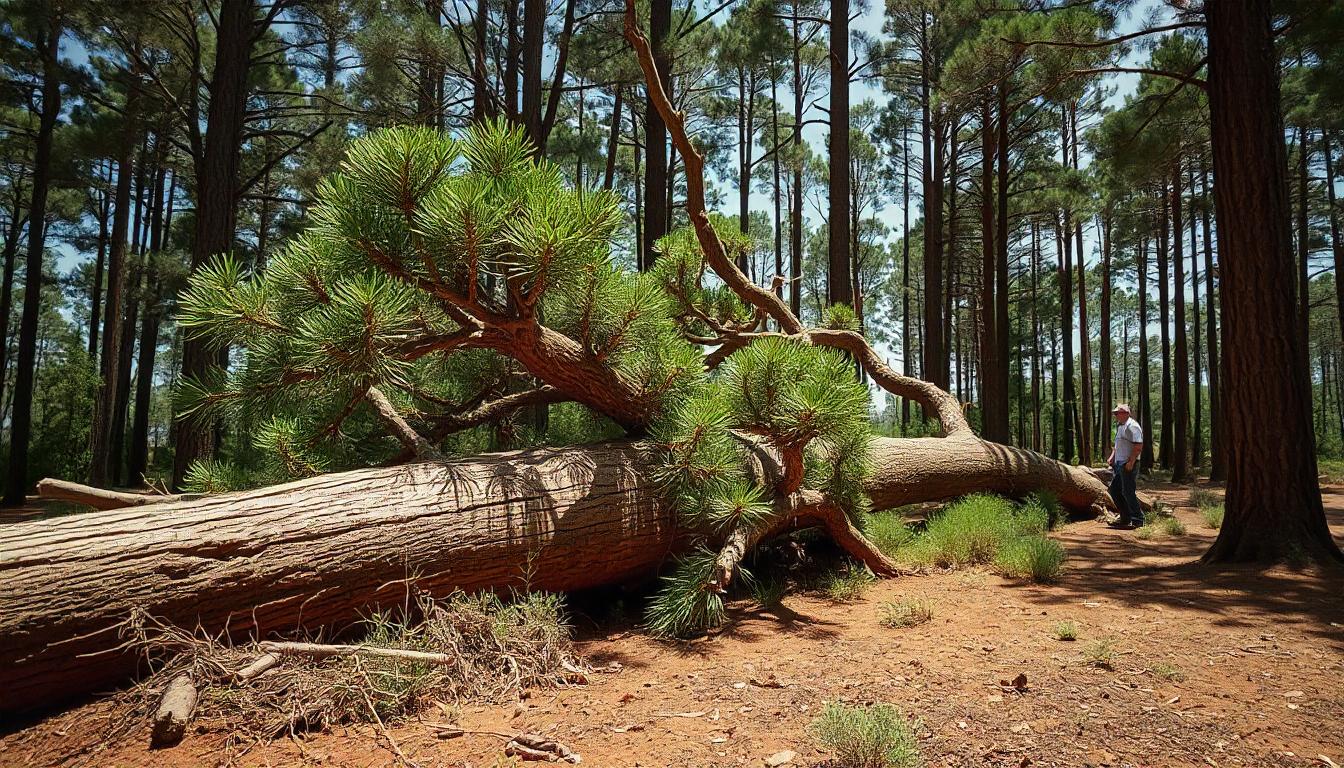Introduction
The Australian pine tree (Casuarina equisetifolia) is a fast-growing, non-native species found in many coastal and subtropical areas. While these trees provide shade and wind protection, they are also prone to toppling over during storms or high winds due to their shallow root systems. Removing fallen Australian pine trees is essential for safety, aesthetics, and environmental restoration. However, the cost of removal depends on several factors, including the size of the tree, location, disposal methods, and whether professional services are required.
Factors Affecting the Cost of Removing Fallen Australian Pine Trees
1. Size and Number of Trees
- Small trees (under 20 feet): $100 – $300
- Medium trees (20-50 feet): $300 – $800
- Large trees (50-100 feet): $800 – $2,500
- Extra-large trees (over 100 feet): $2,500 – $5,000
Larger trees require more manpower, time, and specialized equipment, increasing the overall cost. Additionally, if multiple trees have fallen, the removal expenses will rise accordingly.
2. Location and Accessibility
- Trees in open areas are easier and cheaper to remove.
- Trees near structures, power lines, or bodies of water require precision cutting and may incur additional safety-related costs.
- Remote or difficult-to-access locations increase labor and transportation expenses.
3. Type of Removal Service
- Basic removal: Includes cutting and stacking logs but does not include hauling or stump removal.
- Full-service removal: Includes cutting, hauling, stump grinding, and site cleanup.
- Emergency removal: If the tree has fallen on a house, car, or road, emergency services are needed, which cost significantly more—often double or triple the regular price.
4. Stump Removal Costs
- Stump grinding: $75 – $500, depending on the diameter.
- Complete stump removal: $300 – $800 if excavation is needed.
- Leaving the stump in place: No additional cost, but potential for regrowth or pest issues.
5. Disposal and Cleanup Fees
- Chipping: $50 – $200 per hour.
- Hauling: $75 – $300, depending on distance and volume.
- Burning: Allowed in some areas but may require a permit.
- Recycling into mulch or lumber: Some companies offer discounts for repurposing the wood.
DIY vs. Professional Tree Removal
DIY Tree Removal
Homeowners with experience in tree cutting may opt to remove small fallen trees themselves. However, proper safety gear and equipment (chainsaw, ropes, protective clothing) are essential. Renting equipment may cost $50 – $200 per day.
Pros:
- Saves money if the tree is small and accessible.
- No need to schedule professionals.
Cons:
- Risk of injury or property damage.
- Time-consuming and labor-intensive.
- No insurance coverage if something goes wrong.
Professional Tree Removal
Hiring an insured and licensed tree removal service ensures safe and efficient removal.
Pros:
- Expertise and specialized equipment.
- Faster and more efficient.
- Insurance coverage for damages.
Cons:
- Higher cost.
- May require scheduling in advance.
Cost Estimates for Tree Removal Services
On average, tree removal services charge between $300 and $2,500 per tree, depending on the factors outlined above. Here’s a breakdown of expected costs:
| Service Type | Estimated Cost Range |
|---|---|
| Basic Tree Cutting | $100 – $500 |
| Full-Service Removal | $300 – $2,500 |
| Emergency Removal | $500 – $5,000 |
| Stump Grinding | $75 – $500 |
| Stump Removal | $300 – $800 |
| Hauling & Disposal | $75 – $300 |
Additional Costs to Consider
- Permit Fees: Some municipalities require tree removal permits, ranging from $25 – $200.
- Insurance Claims: If a tree falls on a home or car, homeowners’ insurance may cover part of the removal costs.
- Pest Control: If the tree was diseased or infested, additional treatments may be necessary.
- Landscaping Repairs: Grass, soil, or plants may need restoration after tree removal.
Ways to Reduce Tree Removal Costs
- Get Multiple Quotes – Compare at least three tree removal companies to find the best price.
- Off-Peak Removal – Avoid hiring during peak seasons (spring and summer) when demand is highest.
- Handle Cleanup Yourself – Save money by disposing of branches and debris independently.
- Check for Discounts – Some companies offer discounts for seniors, veterans, or bulk removals.
- Look for Free Services – Some municipalities remove fallen trees on public land for free.
Conclusion
The cost of removing fallen Australian pine trees depends on various factors, including size, location, disposal method, and whether professional services are required. While small trees may be manageable for DIY removal, larger or hazardous trees should be handled by professionals for safety and efficiency. By obtaining multiple quotes and considering different removal options, homeowners can find a cost-effective solution to clear fallen trees while maintaining a safe and attractive landscape.
